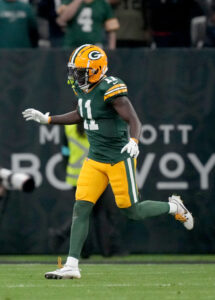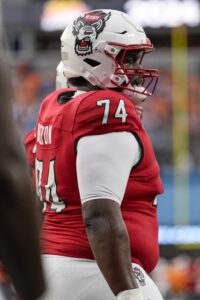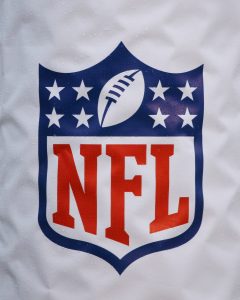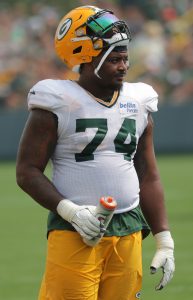In 2022, the Packers attempted to get by with multiple rookie-contract cogs arriving in the wake of Davante Adams and Marquez Valdes-Scantling‘s departures. The result: a season that began Aaron Rodgers‘ decline. However, the team has continued to stockpile rookie contracts at the position — with the most notable move coming last month. Even as Matt LaFleur minimized the need for a true No. 1-level wide receiver, the team snapped a 23-year drought by choosing Matthew Golden at No. 23 overall.
 A roster that still includes the two players added to supplement a post-Adams receiver cadre — Christian Watson, Romeo Doubs — received another youth infusion via Golden and third-round addition Savion Williams. If these four were all healthy and the only notable parts in Green Bay’s receiving group, no front-burner issue may have appeared. But the team also has two 2023 draftees as WR regulars. As a result, the Golden and Williams arrivals create big-picture questions.
A roster that still includes the two players added to supplement a post-Adams receiver cadre — Christian Watson, Romeo Doubs — received another youth infusion via Golden and third-round addition Savion Williams. If these four were all healthy and the only notable parts in Green Bay’s receiving group, no front-burner issue may have appeared. But the team also has two 2023 draftees as WR regulars. As a result, the Golden and Williams arrivals create big-picture questions.
While delayed QB ascents (amid a succession that dates back to 1992) define the Packers’ roster-building philosophy, the franchise’s reluctance to draft a wideout in Round 1 had become a core component as well. As the likes of Greg Jennings, Jordy Nelson, Randall Cobb and Adams revealed, the Pack regularly got by without selecting a receiver in the first round. After the Packers cut ties with 2002 first-rounder Javon Walker via a draft-weekend trade in 2006 (to the Broncos), they moved out of the first-round receiver business.
It could be argued the Pack did not do enough to supplement Rodgers during his heyday — one filled with playoff shortcomings following Super Bowl XLV — but a team once known for free agency avoidance managed to support four MVP seasons for the future Hall of Fame quarterback. Entering Jordan Love‘s third season at the controls, however, the team deemed receiver a high enough priority — after no 900-yard seasons have occurred since Adams’ departure — to use two of its first three picks on the position.
The Jets sent the Packers two second-round picks for Rodgers in 2023. Jayden Reed did not arrive via one of those picks, as the Packers used their original second-rounder to trade down two spots (via the Buccaneers) for him. Dontayvion Wicks arrived in the 2023 fifth round. This already created a glut of Packers rookie-contract receivers, as backup Bo Melton and free agent signing Mecole Hardman are rostered as well. Hardman’s Super Bowl LVIII-winning reception notwithstanding, he provides more return-game value. But the Packers adding the seventh-year veteran and two more rookies creates a situation where notable changes are coming.
 Reed is under contract for two more seasons, and he has seen Golden’s rookie terms ($17.58MM fully guaranteed) dwarf his. On a $7.18MM (4MM guaranteed) pact through 2026, Reed cannot discuss an extension until next year. Packers brass is believed to have met with Reed to clarify his situation recently. With Watson battling injuries before his Week 18 ACL tear, the Packers have turned to Reed as their nominal No. 1 receiver. The slot presence has totaled 1,650 yards and 14 touchdowns in two seasons. He now profiles as the team’s top veteran in a group now headlined by Golden, but what will happen to the other experienced presences?
Reed is under contract for two more seasons, and he has seen Golden’s rookie terms ($17.58MM fully guaranteed) dwarf his. On a $7.18MM (4MM guaranteed) pact through 2026, Reed cannot discuss an extension until next year. Packers brass is believed to have met with Reed to clarify his situation recently. With Watson battling injuries before his Week 18 ACL tear, the Packers have turned to Reed as their nominal No. 1 receiver. The slot presence has totaled 1,650 yards and 14 touchdowns in two seasons. He now profiles as the team’s top veteran in a group now headlined by Golden, but what will happen to the other experienced presences?
Watson would carry considerable trade value, even with a past of soft-tissue maladies, but his knee rehab effectively ensures the North Dakota State product will not be going anywhere this year. Watson is expected to be sidelined until around midseason. This would leave Doubs and Wicks as potential options to be moved.
Wicks did not match his rookie-year yardage figure (581) in Year 2 (415), even as his snap share increased to 54% last season. Doubs, a 2022 fourth-rounder, has been more consistent; he enters a contract year riding back-to-back 600-yard seasons, playing 77% of Green Bay’s offensive snaps in each of the past two seasons. Doubs, 25, managed to clear the 600-yard barrier despite missing four games last season. A team-imposed suspension, as Doubs expressed frustration about his role, took place. He will profile as a quality 2026 free agent, but that episode represents an important chapter in his Green Bay career.
 Wicks will need better production to become a higher-end FA target in 2027. But Golden and Williams’ arrivals complicate Wicks’ 2025 place in the offense and Doubs’ post-2025 Wisconsin future. As Reed makes sense as an extension candidate, Doubs trade rumors may be coming. Though, a Packers team that has hoarded these pieces may be reluctant to move a key performer before the November deadline — especially with Watson not healthy. But calls will undoubtedly come in for the Nevada alum.
Wicks will need better production to become a higher-end FA target in 2027. But Golden and Williams’ arrivals complicate Wicks’ 2025 place in the offense and Doubs’ post-2025 Wisconsin future. As Reed makes sense as an extension candidate, Doubs trade rumors may be coming. Though, a Packers team that has hoarded these pieces may be reluctant to move a key performer before the November deadline — especially with Watson not healthy. But calls will undoubtedly come in for the Nevada alum.
Steelers connections, as Rodgers played with Doubs in 2022, have already emerged in the wake of the team’s George Pickens trade. As of now, however, waiting to see how its younger players look alongside D.K. Metcalf looks to be Pittsburgh’s party line.
Even if Watson lands on the reserve/PUP list as expected, the Packers have plenty of options — fast-emerging tight end Tucker Kraft should also factor into the extension pie — for Love entering training camp. Williams, who did not eclipse 650 yards in any of his five TCU seasons, would have the luxury of an extended developmental arc thanks to the Packers’ bevy of young veterans. But how the team rearranges its pass-catching group in 2026 — or before then — makes this one of the NFL’s most interesting position groups presently.



